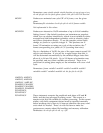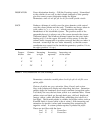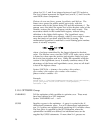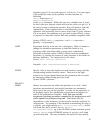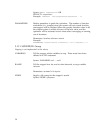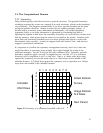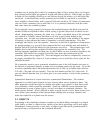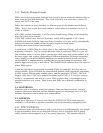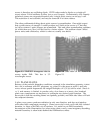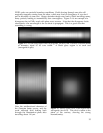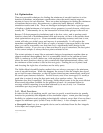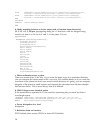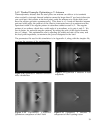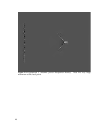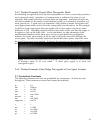
source is therefore an oscillating dipole. FDTD codes model a dipole as a single-cell
source whose E field oscillates in time, just as you’d expect. Unfortunately, only linearly-
polarized sources are supported because only a single point source can occupy a cell.
This restriction is not essential, and may be removed in a future release.
The other problematical thing about point sources is normalization. One might expect
that a point source of strength 1 would produce an E field at the source of 1, but that
isn’t how TEMPEST’s point sources are normalized. This and other normalization problems
(of which there are a few) will be fixed in a future release. The problem doesn’t affect
power ratios and efficiencies, which is what we usually care about.
Figure 2.3 TEMPEST divergence due to
source inside PML. This box is 3.2
wavelengths across.
Figure 2.4: Side view of the domain of
Figure 2.3.
3.5.2. PLANE WAVES
Because of the periodic boundary conditions assumed in the simulation geometry, POEMS
has a lot in common with FFT programs, e.g. point N is the same as point 0, and only
waves whose spatial frequencies are integral multiples of 1/(N dx) can be used. Since dx
<< λ, and memory is limited, in practice only a few dozen or at most a few hundred
plane wave components are necessary to synthesize any desired pupil function. The
down side is that the resulting beams are spatially periodic, and their side lobes will leak
into adjacent domains.
A plane wave source produces radiation in only one direction, and does not interfere
with other field components crossing it. Plane waves don’t work well with fully isolated
domains, i.e. those with PMLs on all surfaces. It’s useful to put PML boundaries
downstream of the illumination, but when using plane waves, some imaginary absorbing
material boundary is often better behind the illumination surface.
34



